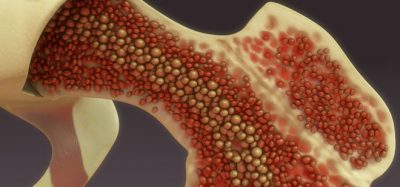OX40-expressing follicular helper T cells can control rheumatoid arthritis
Posted: 1 August 2019 | Rachael Harper (Drug Target Review) | No comments yet
New study shows that a subset of follicular helper T cells contributes to the hyposialylation of autoantibodies in rheumatoid arthritis.


While investigating the role of follicular helper T cells in the onset of rheumatoid arthritis, a research team from the University of Tsukuba, Japan, have found that OX40-expressing follicular helper T cells contributed to inflammation by regulating a chemical modification of autoantibodies known as sialylation.
“Sialylation of autoantibodies has been shown to contribute to the onset of experimental arthritis in mice, through a subset of T helper cells,” said Isao Matsumoto, corresponding author on the study. “Because OX40-expressing (IL-17-producing) follicular helper T cells are present at increased proportions in patients with rheumatoid arthritis, we suspected that these cells may play a role in sialylation that promotes the development of rheumatoid arthritis.”
The study showed increased numbers of OX40-expressing (IL-17-producing) follicular helper T cells were found during the onset of experimental arthritis, accompanied by autoantibodies with an increased ability to activate immune cells in vitro. Analysis of the autoantibodies revealed that changes in sialylation caused this increased inflammatory potential, suggesting that the process of sialylation may provide a useful drug target for treatment of rheumatoid arthritis.
Reduce preclinical failures with smarter off-target profiling
24 September 2025 | 15:00PM BST | FREE Webinar
Join this webinar to hear from Dr Emilie Desfosses as she shares insights into how in vitro and in silico methods can support more informed, human-relevant safety decisions -especially as ethical and regulatory changes continue to reshape preclinical research.
What you’ll learn:
- Approaches for prioritizing follow-up studies and refining risk mitigation strategies
- How to interpret hit profiles from binding and functional assays
- Strategies for identifying organ systems at risk based on target activity modulation
- How to use visualization tools to assess safety margins and compare compound profiles
Register Now – It’s Free!
…blocking this interaction could reduce autoimmune inflammation while preserving immune interactions necessary for controlling potential infections
In addition to blocking the interaction between cells that could lead to increased inflammation via autoantibodies, the researchers found that this blocking strategy could reduce the numbers of follicular helper T cells in mice, which may contribute to extended resolution of arthritis symptoms.”Our analyses revealed that the interaction between OX40 on the surface of follicular helper T cells and OX40L on antibody-producing B cells led to reduction of sialylation on autoantibodies in mice,” added lead author Izumi Kurata. “We found that blocking this interaction could reduce autoimmune inflammation while preserving immune interactions necessary for controlling potential infections.”
The study was published in Annals of the Rheumatic Diseases.
Related topics
Analysis, Antibodies, Cell Cultures, Drug Targets, Research & Development, T cells
Related conditions
rheumatoid arthritis
Related organisations
University of Tsukuba
Related people
Isao Matsumoto, Izumi Kurata








